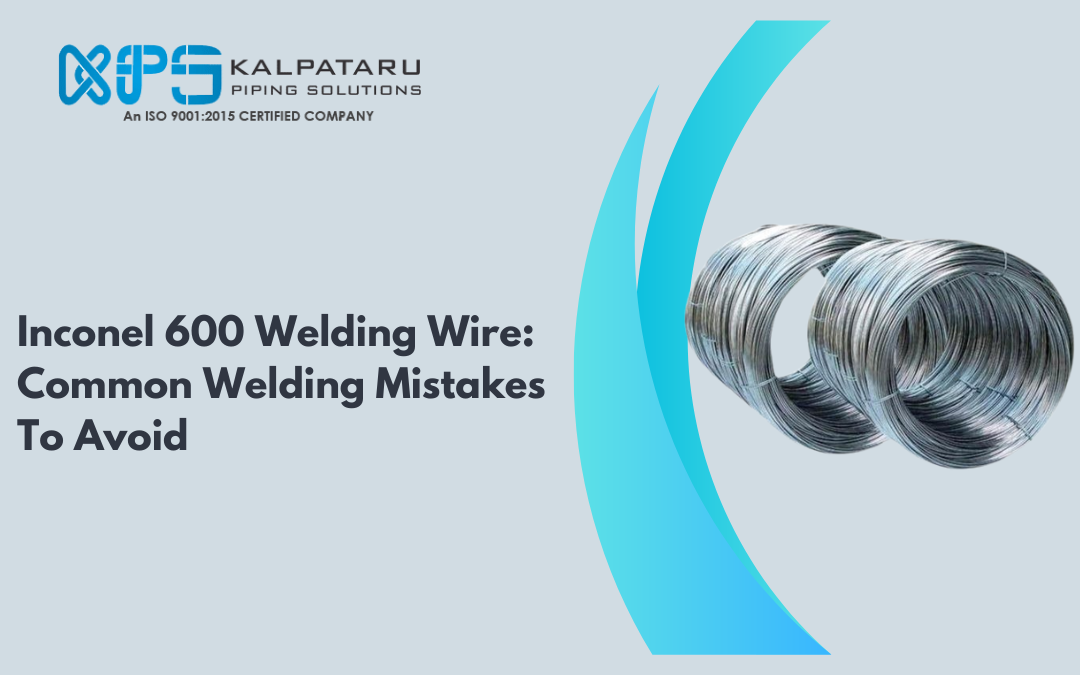If you’re in need of a reliable and long-lasting welding solution, look no further than Inconel 600 welding wire. Inconel welding will be a top choice across diverse industries, demanding exceptional heat and corrosion resistance, from aerospace to food processing. In this guide, we’ll learn more about the Inconel welding wire, properties, and composition of Inconel 600 welding wire, providing insights into its exceptional qualities. Stay tuned to discover why it’s a top-choice product for various welding needs!
What Is Inconel 600 Welding Wire?
Inconel 600 Welding Wire isn’t just another wire; it’s a high-nickel powerhouse renowned for its exceptional weldability and resistance to corrosion. This remarkable alloy boasts superior metallurgical stability, making it highly resistant to stress cracking caused by chloride ions.
Inconel Welding Properties
Inconel 600 welding wire is designed for high-temperature environments, boasting excellent resistance to rust and heat. Made of Nickel, Chromium, iron, and additives like aluminum and titanium, it’s great for welding due to its high melting point. The wire form is flexible, so it won’t crack when bent.
What Rod Is Used To Weld Inconel 600 Filler Wire?
Inconel 600 welding wire thrives in diverse welding environments, showcasing compatibility with various techniques like TIG, MIG, and plasma arc welding. Despite this versatility, TIG welding often reigns supreme for joining Inconel alloys, including Inconel welding electrode 600.
TIG Welding
This process utilizes a non-consumable tungsten electrode, drawing its filler metal solely from the Inconel 600 welding wire. Its precise heat control and minimal spatter make it ideal for creating clean and high-quality welds.
MIG (Gas Metal Arc Welding)
In contrast, MIG welding employs a consumable electrode that doubles as the filler metal. While this method can be faster, it requires more attention due to potential spatter and the need for precise parameter control for optimal results.
Plasma Arc Welding (PAW)
This technique utilizes a constricted plasma arc to generate intense heat, enabling deep penetration and high travel speeds. While less common for Inconel welding, PAW can be suitable for specific applications requiring deep welds.
By carefully considering both the base metal properties and application requirements, one can ensure the chosen filler metal harmonizes seamlessly with Inconel 600 welding wire, leading to optimal weld fusion and structural integrity. Remember, consulting a qualified welder is crucial for selecting the most suitable filler metal and welding process to achieve a robust and successful weld for your specific application.
Common Mistakes to Avoid When Welding With Inconel 600 Welding Wire
Below are some common mistakes to avoid when working with Inconel 600 welding wire:
1. Improper Material Preparation
A common error encountered when using Inconel 600 welding wire is improper material preparation. This wire demands a clean surface to ensure top-notch welds. It’s imperative to thoroughly remove any oil, grease, rust, or other impurities from the material before welding. Neglecting this step can result in the formation of porosity, brittleness, and cracks in the weld. Thus, invest the necessary effort in cleaning the surface using tools like wire brushes, grinders, or appropriate chemicals prior to welding.
2. Incorrect Gas Mixture for Inconel 600 Welding
Another prevalent error welders often commit when utilizing Inconel 600 welding wire is choosing an inappropriate shielding gas. Inconel 600 necessitates a shielding gas rich in argon to avert oxidation and contamination during the welding process. Opting for the wrong gas type or maintaining an improper flow rate can result in subpar weld quality, porosity, or even fissures within the weld. It’s imperative to opt for a shielding gas with a high argon content and ensure an adequate flow rate to guarantee the attainment of high-quality welds.
3. Incorrect Welding Parameters
Improper welding technique is a frequent error encountered when using Inconel 600 welding wire. Given its low thermal conductivity and intense heat properties, welding demands considerable expertise. Mistakes such as excessive or insufficient welding, as well as incorrect travel speed, can lead to subpar weld quality, distortion, and cracking. Hence, it’s crucial to invest time in mastering correct welding methods before undertaking welding with Inconel 600 welding wire.
4. Using the Wrong Filler Metal
When choosing filler metals, it’s imperative to consider factors such as material composition, intended application, and strength needs. In the case of Inconel 600 welding wire, using a compatible filler metal is essential for achieving top-notch welds. Therefore, prioritizing safety measures and selecting the appropriate filler metal are paramount to preventing welding mishaps.
5. Ignoring Safety Protocols
It’s crucial for welders to prioritize safety when working with Inconel 600 welding wire. Welding generates hazardous fumes and radiation, posing risks to health. Neglecting to wear proper protective gear and provide adequate ventilation can lead to injuries and health issues. Prioritize safety protocols during welding operations to safeguard yourself and your colleagues from potential hazards.
Final Thoughts
Welding with Inconel 600 welding wire demands precise technique, skill, and expertise. Avoiding errors like inadequate material preparation, incorrect filler metal choice, and overlooking safety precautions is vital for achieving top-notch welds. Prioritize proper surface preparation, select suitable gas and filler metal, adhere to correct welding methods, and consistently follow safety guidelines. By adhering to these guidelines, you can enhance your welding proficiency and produce superior quality welds.
Contact us now for your business needs.

